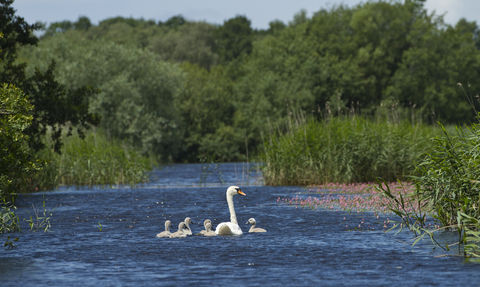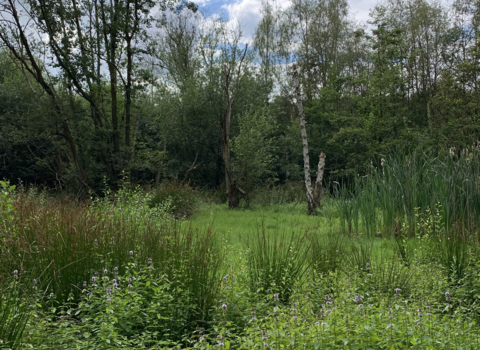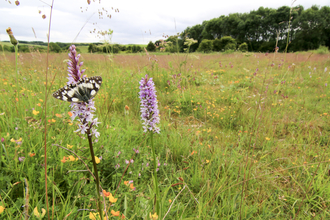
© Guy Edwardes/2020VISION
Natural Flood Management with The Wildlife Trusts
Restoring our rivers and wetlands to protect homes and businesses from flooding
The Wildlife Trusts are experts in natural flood management (NFM) solutions that slow the flow of water through catchments, helping to reduce flood risk downstream to homes and businesses. By restoring natural processes around in and around rivers and their catchments, we can better manage water in the landscape, and bring back a network of healthy, thriving watercourses for wildlife and communities to enjoy.
Every £1 invested in natural flood management (NFM) is expected to deliver £10 of benefits over 30 years.*
The Wildlife Trusts work in urban and rural areas, with a range of businesses, farmers, landowners, and organisations to support natural flood management by protecting soil, adding features like hedges, ponds, rain gardens and leaky woody dams, and funding local community projects. We have more than 150 active natural flood management projects underway. These efforts help reduce flood risks and strengthen community resilience.

Sam Alexander Photography
Report: Assessing the multiple benefits of Natural Flood Management
This report, produced in partnership with Intact Insurance and Stantec, quantifies the full benefits of selected Wildlife Trust natural flood management projects. It highlights the economic and social value of interventions like woodland planting, river re-meandering, and beaver reintroduction. The analysis examines their impact on communities and draws on wider research to identify key lessons. We set out clear recommendations for the Government to mainstream, standardise, and support natural flood management.
A natural solution to the climate crisis
What is Natural Flood Management?
Natural flood management focuses on lowering peak flow levels during flood events and/or delaying the arrival of water downstream, providing more time to prepare for potential flooding and reducing the total damage. This is achieved by slowing the movement of water through a river catchment in three main ways:
-
Enhancing soil infiltration to allow more water to soak into the ground.
-
Storing water using natural features like ponds, ditches, or low-lying areas, or by creating new storage areas.
-
Slowing water flow by increasing interception and obstacles, such as planting trees on floodplains, building “leaky dams” in streams or rivers, and re-wiggling rivers and streams.
How can land-owning businesses support natural flood management?
Businesses can make a significant impact in supporting natural flood management projects for communities and impacted catchments. Here are some actionable steps they can take:
- Preserve soil infiltration by avoiding or reducing areas of hardstanding ground over soil, which helps maintain natural water absorption and reduces surface runoff.
- Install features on their properties such as rain gardens, green roofs, or swales to slow water flow and increase storage during heavy rainfall.
- Fund local NFM initiatives by partnering with environmental organisations or supporting community-led projects involved in wetland restoration, reforestation, or the construction of “leaky dams.”
- Promote sustainable practices by advocating for NFM principles within the business community and encouraging others to adopt similar strategies.
- Engage employees and stakeholders in volunteer activities or educational programs that support NFM efforts in the local area.
By taking these steps, businesses can help mitigate flood risks, protect their assets, and contribute to a more sustainable and resilient community.

The Derwent Living Forest Project and Derbyshire Wildlife Trust
This project is improving woodland habitat connectivity and reducing flood risk in the Derbyshire River Derwent catchment, where storm events have caused multiple severe flooding events exceeding or close to “1 in 100-year levels,” every year since 2019.
The project aims to create 30,000 hectares of wooded habitats (such as woodland, hedgerows, orchards and parklands) and wetland by 2050. This will not only sequester carbon and provide a haven for wildlife but also offer natural flood management benefits by absorbing and slowing rainwater and reducing erosion.



